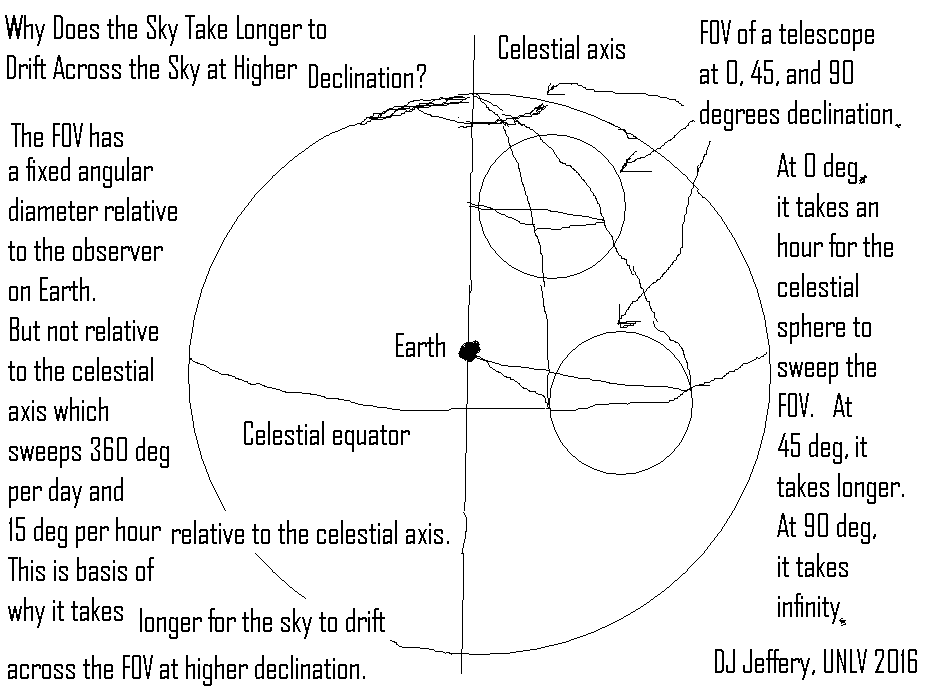
Caption: An illustration of why it takes the sky longer to drift across the field of view (FOV) as the magnitude of declination increases.
Features:
- A telescope
FOV (for a given
eyepiece) subtends a fixed
angular diameter
(which is also called FOV)
on the sky
(or celestial sphere) for the observer
on Earth.
- However, the angular diameter subtended
at the celestial axis point
at the vertical height of the
FOV increases with
with the magnitude of the height which means with
the magnitude of declination
of observation.
- Now the angular velocity
of the celestial sphere
(360 degrees per sidereal day
= sidereal hour)
is for rotation about the celestial axis---it does
NOT change with magnitude of declination.
- Since the
FOV
Credit/Permission: ©
David Jeffery,
2016 / Own work.
Image link: Itself.
Local file: local link: field_of_view_declination.html.
File: Telescope file:
field_of_view_declination.html.